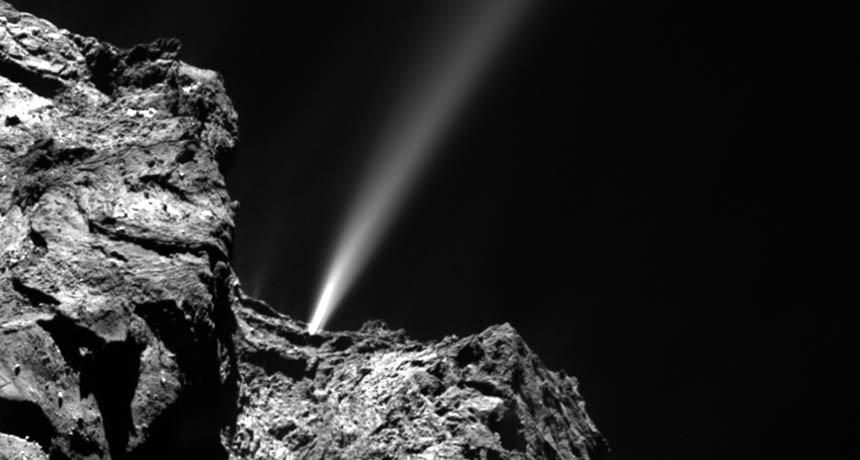Comet 67P, Rosetta spacecraft cozy up to the sun

AWESOME JETS Gas and dust shoot from comet 67P in this image taken July 29 by the Rosetta spacecraft, as both make their closest approach to the sun. The image was taken was when Rosetta was 186 kilometers from the center of the comet.
ESA/Rosetta/MPS for OSIRIS Team MPS/UPD/LAM/IAA/SSO/INTA/UPM/DASP/IDA







